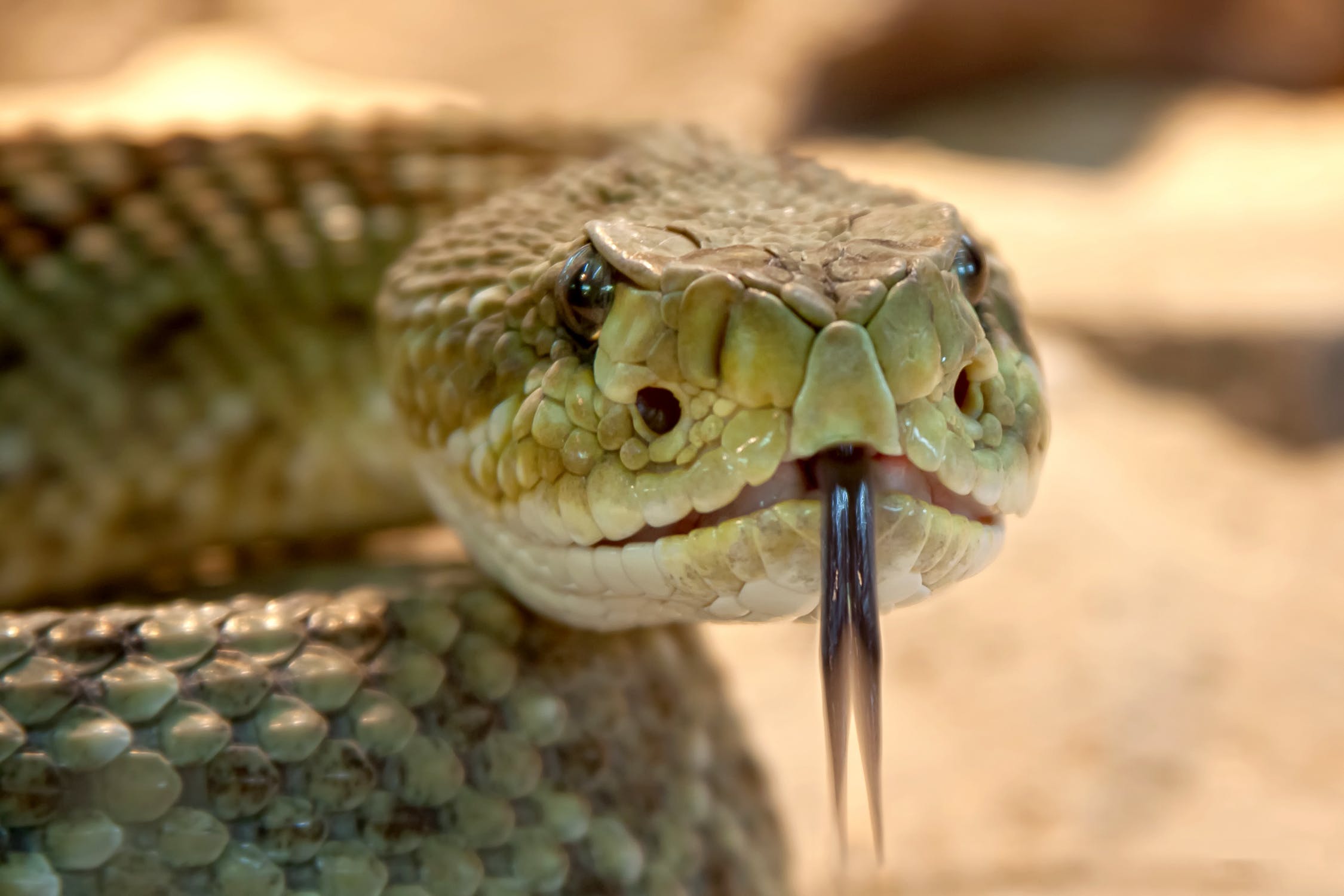Just thinking about a snake would make anyone shudder — even actual harmless, non-venomous snakes — and much less want to own them as pets. But we hope that this article will change your opinion about snakes and may inspire you to own one.
- Snakes might have possibly evolved from lizards, with which they are closely related. It is a mystery though, that snakes did not evolve from legless lizards, although the latter does look like snakes in some ways. They are reptiles with one or two lungs but no gills.
- All snakes simply have skull, vertebrae, and ribs, and some snakes can have more than 300 pairs of ribs. Some species even have over 400 vertebrae with almost the same number of pairs of ribs.
- Yes, snakes do have necks, even if it sounds unbelievable at first considering that they are likened to one long tube. If you lay a (dead) snake on a table, you can possibly divide the snake’s anatomical parts into sections.
- Apart from having nostrils, the snake uses its retractile forked tongue to smell different odors. When it flicks its tongue out, it gathers tiny particles from the air. Strangely snakes have no moveable eyelids and no external ear openings like other animals.
- A legless lizard has eyelids and external ear openings, while a snake doesn’t have them. A legless lizard also has a thicker and less forked tongue, while a snake has a much slender and forked tongue.
- No matter how small or big snakes are, or how different their temperaments can be, all snakes are agile and have the same body shape.
- Snakes come in all shapes and sizes. Around the world, there are approximately 725 species of venomous snakes out of which 250 can kill a human with just one bite.
- The smallest-known snake on the planet, Leptotyphlops carlae, can reach up to only 4 inches in length, while the biggest snake is the reticulated python which can measure over 30 feet in length.
- Since snakes are hardy animals, most of them are agile and tend to have long lives, depending on the type and size. Life span also differs among different snakes that live in captivity. Rat snakes and king snakes can live up to 15 years while pythons and boas can live up to over 20 years.
- Common rat snakes and king snakes can live for over 15 years. Other rat snakes, such as the black rat snake, can live over 30 years. For king snakes, it is not uncommon for them to live as long as 20 years.
- Snakes can be found all around the earth except Ireland, New Zealand, Iceland and North/South Poles.
- The most venomous snakes are the inland taipan, the eastern brown snake, the coastal taipan, the tiger snake, and the black tiger snake. Amongst these the Inland Taipan is a more toxic snake, holding poison that can skill up to 80 people.
- It’s common that anyone would have an aversion towards snakes, but have you heard anyone who is actually allergic to them? Since they have no furs or secretions like other pet animals, snakes are unlikely to give you allergic itchiness or wheezing. Even a non-venomous snake’s bite doesn’t produce any allergic reaction.
- Snakes are one of the cleanest animals to care for as pets, and they are the least odorous. No need to buy air fresheners or install and anti-odor repellent system to keep your rooms smelling fresh. They are low-maintenance animals that do not need to be bathed and groomed. But that doesn’t mean you should totally neglect them! Despite being hardy, you still have to provide a proper, well-ventilated cage for your pet snake. And maybe, a little bonding with them.
- A livable space for a snake depends on how big the snake is. But in relation to their size, they need little space — even a big boa constrictor can live comfortably inside a four-feet-long, 2-feet-wide and 2-feet high glass cage. This is compared to a dog or a cat that obviously need much more space to move around.
- Anaconda is the world’s heaviest snake and weighs more than 270 kgs (595 pounds) and is 9m/30 ft long. Anaconda is also famous for earing animals such as capybaras and jaguars.
- The reticulated python is the longest snake, more than 33 feet long, and can easily swallow a deer, pig or a human being.
- There are snakes that can also fly, from 4 to 330 feet through the air.
- If you want, you may let your snake roam the house in search of vermin like rats and insect pests for a free meal. Kidding aside, you don’t need much food, much time and many costs to feed a snake, because they usually forego food for a week after having a full meal, under the right conditions. Even bigger snakes will feel contented for a week after having dined on a big enough meal. This is still less costly and less time-consuming compared to feeding a dog or a cat. On average, a snake needs 6-30 meals a year to live happy and healthy.
- Active young snakes can molt (shed skin) every about two weeks which is almost 8 to 12 times in a year.
- The fear of snakes is one of the most common fears, also known as ophiophobia or herpetophobia. One out of every third person is fearful of snakes.
If you want to know more about snakes, here are some books that are captivatingly detailed;

